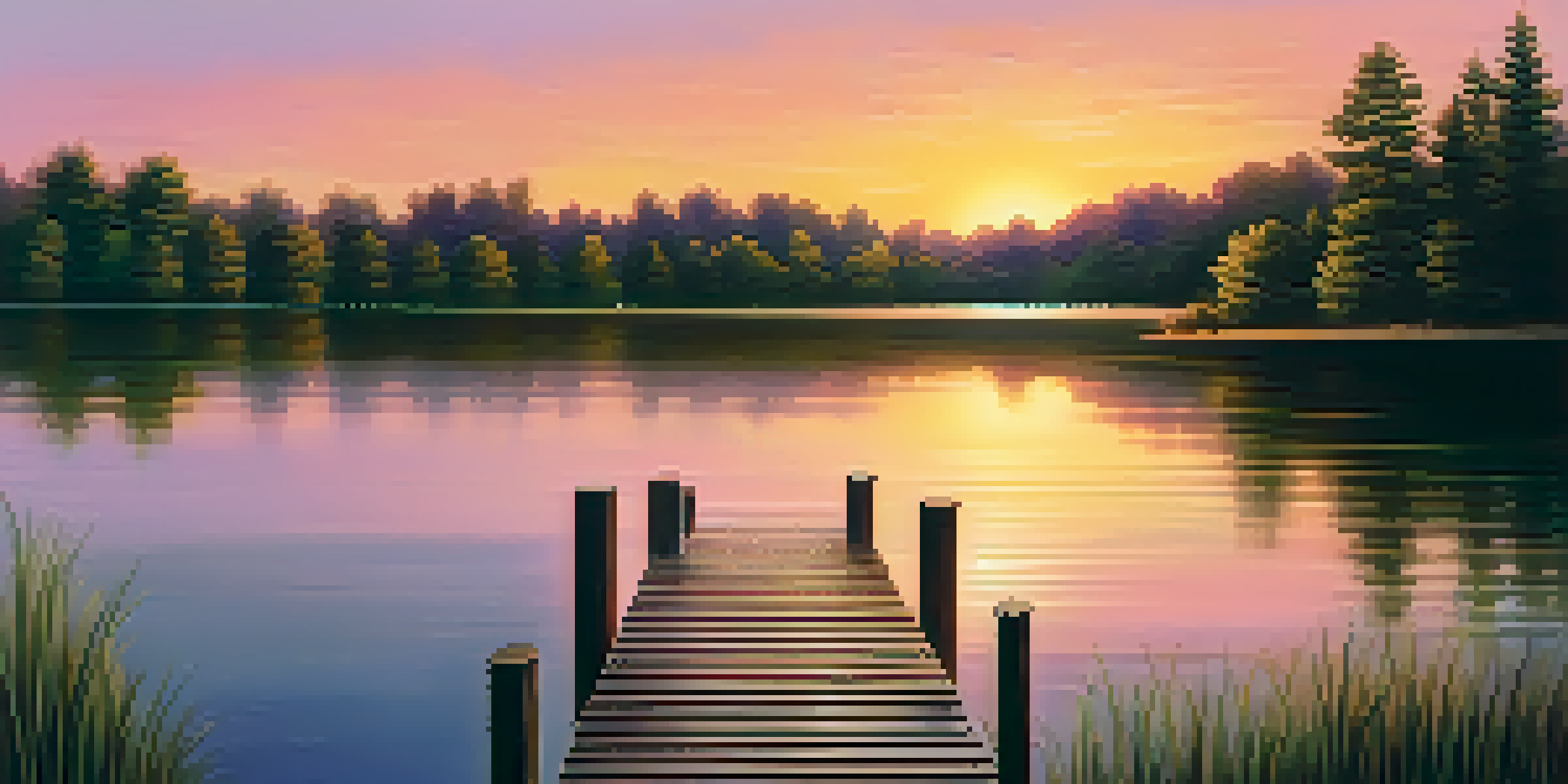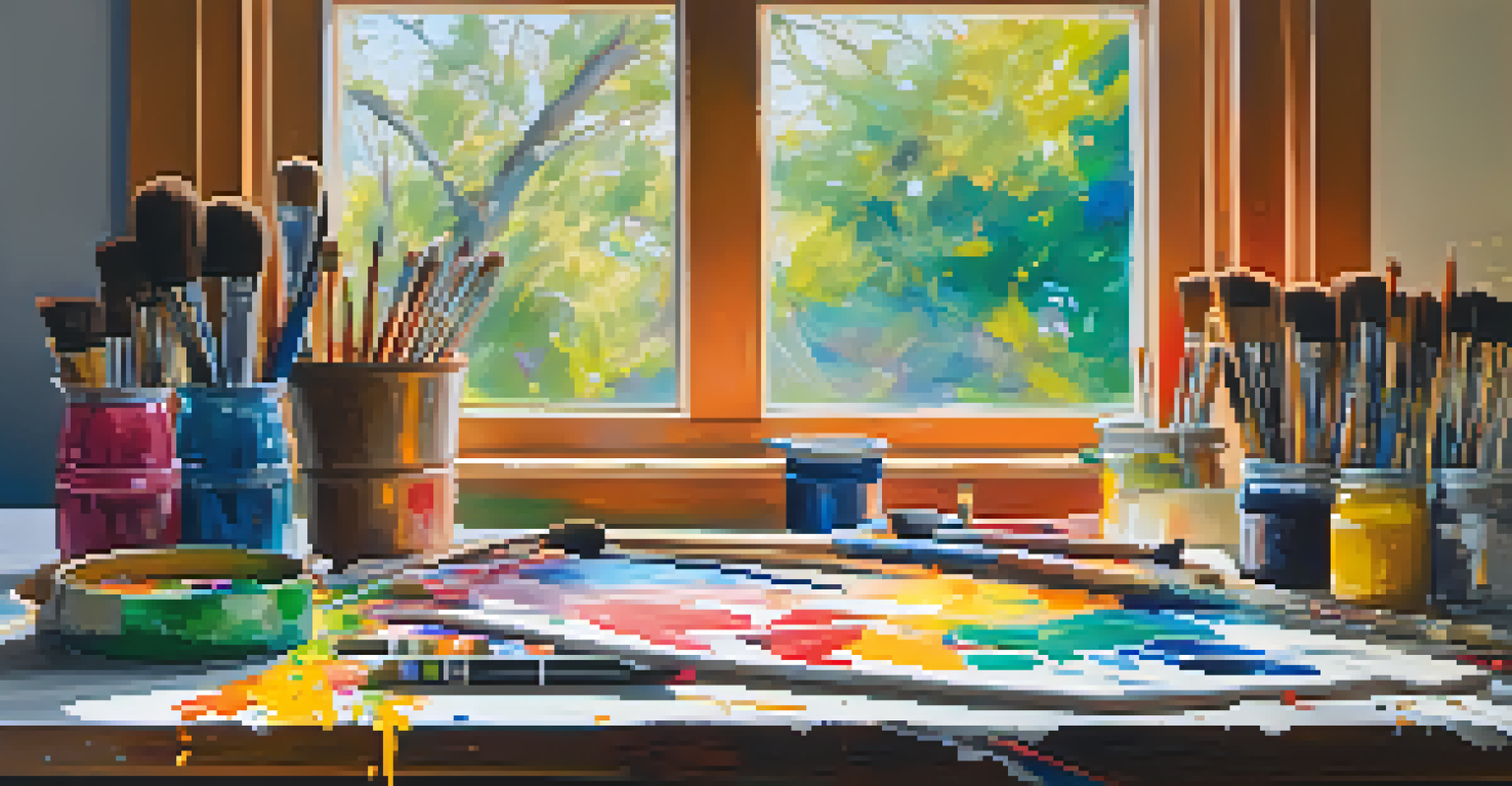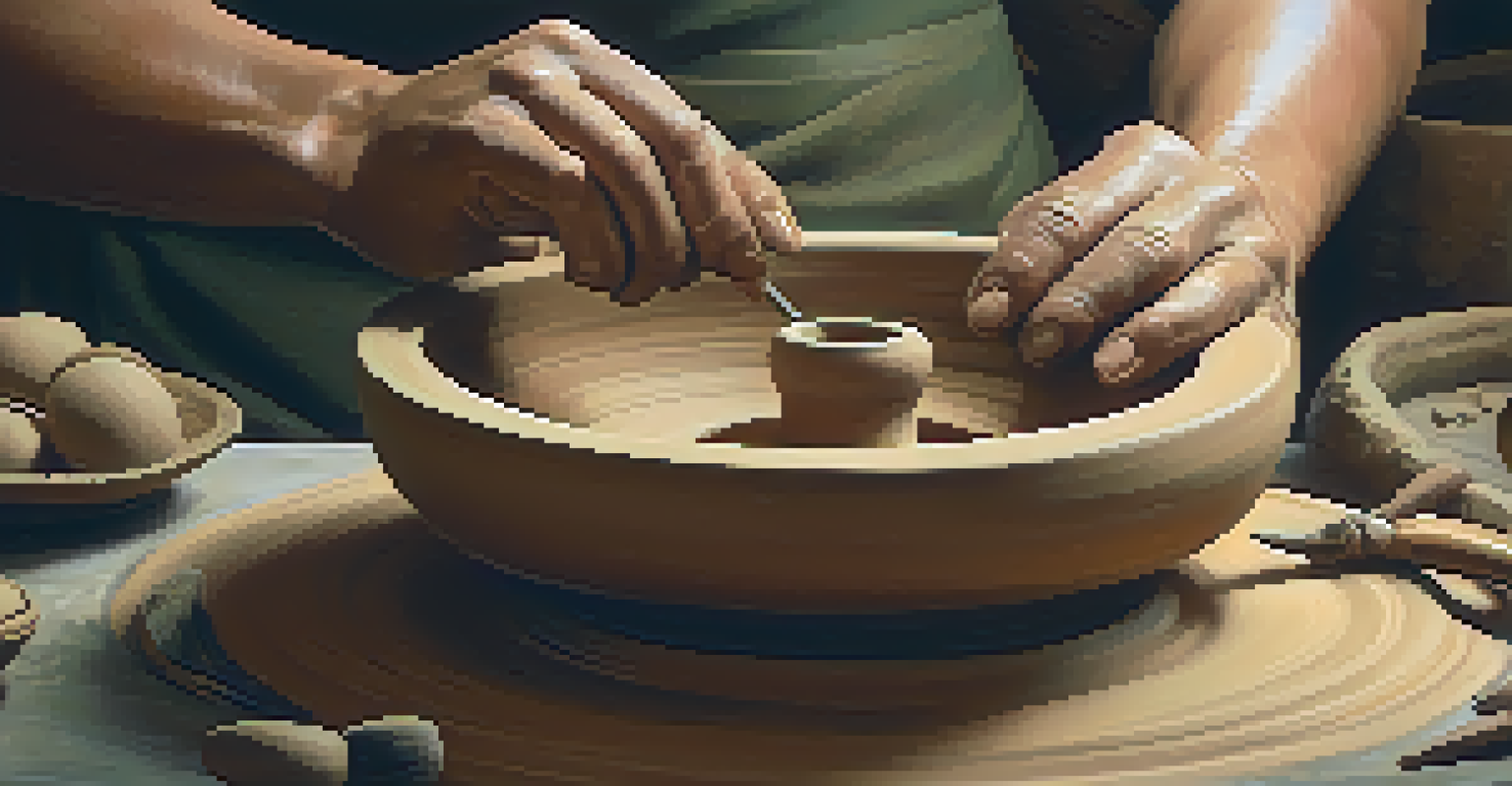The Journey of an Artist: Stages of Artistic Growth

The Spark of Inspiration: Where It All Begins
Every artist's journey begins with a spark of inspiration. This initial moment can come from anywhere—a striking landscape, a powerful emotion, or even a conversation with a friend. It's like finding a tiny seed that, with care and nurturing, has the potential to grow into something beautiful.
Every artist was first an amateur.
In this stage, artists often experiment with various mediums and styles, trying to express their newfound ideas. This exploration is crucial, as it helps them discover what truly resonates with them. Think of it as tasting different flavors before deciding on your favorite dish.
The spark of inspiration is not just about the art itself; it's also about the emotional connection that drives the artist. This connection fuels their passion, inspiring them to create and share their vision with the world.
The Honeymoon Phase: Enthusiasm and Discovery
After that initial spark, many artists enter what’s often referred to as the honeymoon phase. During this period, everything feels fresh and exciting, and the possibilities seem endless. It’s like falling head over heels in love—everything is beautiful and inspiring.

This stage is characterized by a flurry of creativity and a willingness to try new things. Artists may find themselves producing work at a rapid pace, driven by their enthusiasm. It’s a time for exploration, where mistakes are seen as stepping stones rather than setbacks.
Inspiration Ignites the Journey
Every artist's journey begins with a spark of inspiration that fuels their creativity and emotional connection to their work.
However, this phase can also lead to unrealistic expectations. As the initial thrill begins to fade, artists might start to question their abilities, which is a natural part of the journey. Recognizing this can help them embrace the next stages of growth.
Facing Challenges: The Reality Check
As artists progress, they inevitably face challenges that test their resolve. This stage often feels like hitting a wall—self-doubt creeps in, and inspiration may start to wane. It’s crucial for artists to understand that struggles are a normal part of the creative process.
The only way to do great work is to love what you do.
During this reality check, artists often reevaluate their skills and motivations. They may find themselves frustrated with their work, questioning if they are truly cut out for this path. This introspection can be tough but is essential for growth.
The challenges faced during this stage can ultimately lead to deeper understanding and refinement of one’s craft. By confronting these obstacles, artists can emerge stronger and more resilient, ready to embrace new opportunities.
Finding Your Voice: The Turning Point
After navigating through challenges, artists often experience a turning point where they start to find their unique voice. This stage is about self-discovery and understanding what truly matters to them as creators. It’s like finally tuning an instrument to produce a beautiful melody.
In this phase, artists begin to develop a signature style that reflects their personal experiences, beliefs, and emotions. They become more confident in their choices, moving away from imitating others and embracing authenticity. It’s a moment of empowerment that can lead to more meaningful work.
Growth Through Challenges
Navigating challenges is essential for artists, as it fosters resilience and leads to deeper self-discovery and artistic evolution.
Finding one’s voice is not a one-time event; it’s an ongoing process that evolves over time. Artists may revisit this stage multiple times throughout their careers, continually refining their expression and deepening their connection to their art.
The Growth Mindset: Embracing Continuous Learning
With a defined voice comes the understanding of the importance of continuous learning. Artists realize that growth is a lifelong journey, and there’s always more to explore and discover. This growth mindset encourages them to seek new knowledge and techniques, much like a traveler eager to explore new terrains.
In this stage, artists may take workshops, collaborate with others, or immerse themselves in different cultures to broaden their horizons. They become more open to feedback, viewing it as an opportunity for improvement rather than criticism. This willingness to learn fuels their creativity.
Adopting a growth mindset helps artists adapt to changes in the creative landscape. By staying curious and open, they can continually evolve their craft and remain relevant in an ever-changing world.
Sharing Your Work: The Leap into the World
As artists grow more confident in their abilities, they often feel compelled to share their work with the world. This can be a daunting leap, akin to stepping onto a stage for the first time. However, sharing one’s art is a vital part of the artistic journey.
This stage involves not only showcasing their creations but also connecting with an audience. Artists may use social media, galleries, or local exhibitions to present their work, allowing them to receive feedback and build a community. It’s a chance to inspire others and foster meaningful connections.
Sharing Cultivates Community
As artists gain confidence, sharing their work not only showcases their talent but also connects them with an audience, fostering a supportive artistic community.
While the fear of judgment may linger, the act of sharing can be incredibly liberating. Artists learn to embrace vulnerability and take pride in their accomplishments, recognizing that their voice and perspective have value in the larger conversation of art.
Reflection and Evolution: The Ongoing Journey
The journey of an artist is never truly complete; it’s an ongoing cycle of reflection and evolution. Artists often revisit earlier stages, reassessing their work and seeking new ways to grow. This cyclical nature ensures that their art remains dynamic and relevant.
In this stage, artists may look back on their past works with a critical eye, identifying patterns, strengths, and areas for improvement. Reflection allows them to celebrate their achievements while also setting new goals for the future. It’s about embracing change and adapting to new experiences.

Ultimately, the journey of an artist is one of continuous growth, self-discovery, and expression. Each stage contributes to their overall development, enriching their artistic narrative and deepening their connection to their craft. By embracing this journey, artists can continue to inspire and evoke emotions in others.